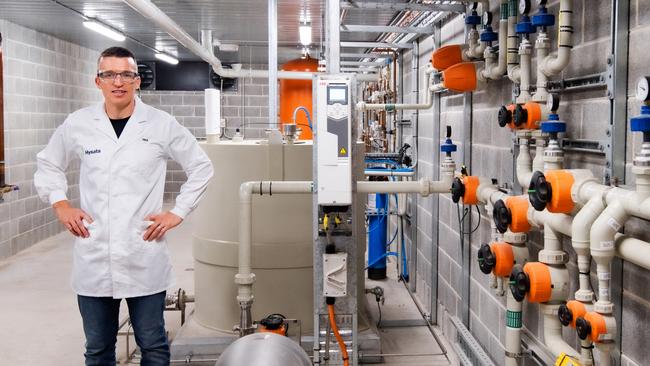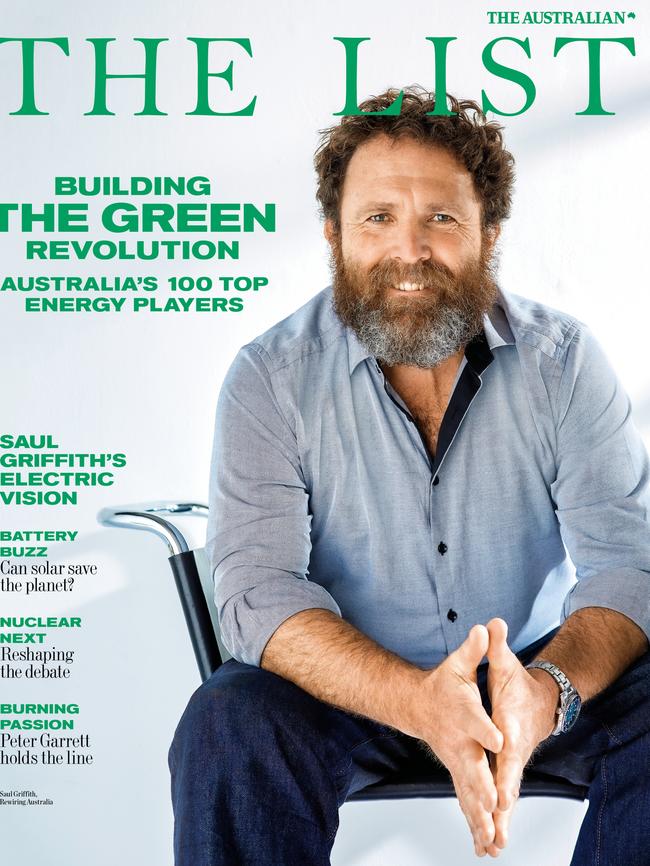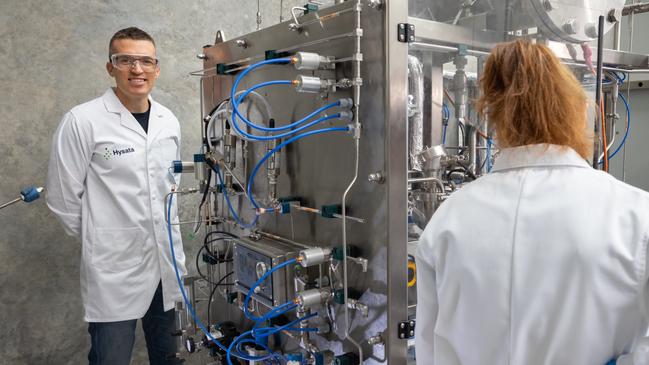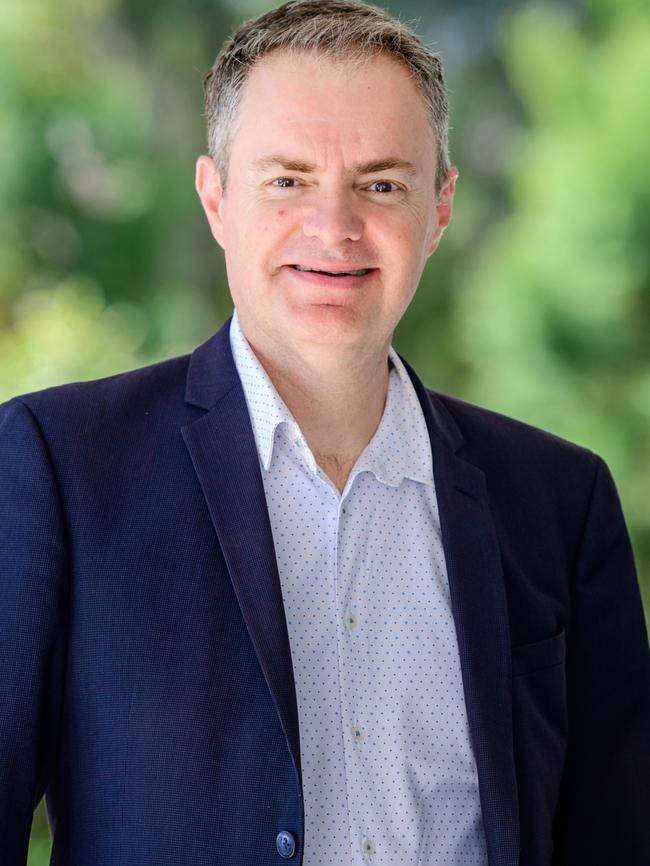Serious money is still flowing to green hydrogen despite some scaling back plans
Green hydrogen ambitions have flickered recently, but serious money is still flowing into the sector from international investors which excites people like Paul Barrett.

Australia’s green hydrogen ambitions have flickered recently, but they certainly haven’t been extinguished. Billionaire Andrew “Twiggy” Forrest, Origin Energy and Woodside may have scaled back their green hydrogen plans in recent months, but serious money is still flowing into the sector from international investors with faith in Australia as a renewable energy superpower.
Hydrogen is one of the most important commodities in the industrial world and is used to produce everything from petrochemicals and fertilisers to margarine and glass as well as to generate electricity in fuel cells.
The ability to use clean hydrogen to decarbonise the global economy is a big drawcard for investors and governments.

This is an article from The List: 100 Top Energy Players 2024, which is announced in full on November 22.
Most hydrogen, at the moment, is produced using fossil fuels or other sources, and is known as “grey” hydrogen. Hydrogen can also be produced in an electrolyser, using electricity to split water into hydrogen and oxygen.
When the electricity used is from renewable sources, such as wind and solar, the hydrogen produced is known as green hydrogen.
Australia, with its ample sources of land, wind and solar, has the potential to produce huge quantities of green hydrogen for both domestic and export use.
It is that potential that excites people like Paul Barrett, chief executive of Port Kembla-based electrolyser manufacturer Hysata.
“In 25 years, it won’t be the petro states dominating the world, but the electron states,” says Barrett.

“Australia has a great opportunity to be one of those electron states. It has all of the advantages – lots of land, water, solar and wind, plus the mineral wealth.”
Former Japanese ambassador to Australia Shingo Yamagami has declared hydrogen shipments from Australia to Japan could eventually rival the post-war boom in coal trade between the two countries. Yamagami argues Australia is set to become a major source of hydrogen for Japan as it moves to a carbon-neutral economy by 2050. Taiwan is also looking to follow Japan in importing Australian hydrogen as it boosts its energy resilience in the face of growing threats from China.
However, one of the major challenges facing the green hydrogen sector is the current high cost of renewable power and capital costs. Origin announced in October that it was exiting the $207m Hunter Valley Hydrogen Hub project because of uncertainty around the “pace and timing of development of the hydrogen market” and the risks associated with capital-intensive infrastructure. Forrest earlier this year scaled back his green hydrogen targets in a backdown that coincided with the loss of 700 jobs at Fortescue.
The professional services firm, PwC, says that without a price on carbon emissions, grey hydrogen is inexpensive while green hydrogen from renewable power can be up to five times the cost.
Barrett believes costs can come down using the right technology. He says the home-grown electrolyser developed by his company uses 20 per cent less power than other models, paving the way for the development of green hydrogen for industrial use and heavy transport. Some heavy hitters are backing his ambitious outlook.
Hysata has just raised $170m from BP, Korean steelmaker POSCO, Malaysia energy giant Petronas and wind turbine company Vestas to move the company closer to commercial production of its electrolysers.
“We just have to seize the opportunity,” says Barrett. “Australia has to be really smart because we are competing with countries like China and the US.”
Geoscience Australia says there is still significant interest in Australia’s future hydrogen production, with more than $200bn in the investment pipeline for hydrogen and derivatives.
So far projects in Australia remain small, with the largest operational project, Hydrogen Park South Australia, producing 175 tonnes per year from electrolysis, using renewable energy.

Paul Hodgson, director of the Centre for Hydrogen and Renewable Energy at Central Queensland University, says the rollout of green hydrogen projects is taking longer than expected, with the supply of renewable power being a key challenge.
“There are a lot of potential projects, but I expect more will fall by the wayside,” says Hodgson. “Companies like Origin had to prioritise what they were investing in. It is going to have a future, but as Forrest says, the rollout of renewables is not happening fast enough. We are moving from a situation where people thought, this will be easy, to a situation where they realise it is going to be hard.”
Holding onto hopes for the future of green hydrogen
PwC argues that potential hydrogen producers are struggling to raise the finance needed to reach the final investment decision and construction phase because they don’t have binding off-take agreements. In a recent report, PwC says the ultimate consumers – including manufacturers and energy retailers – are reluctant to enter binding agreements because the price for clean hydrogen is much higher than the fossil-fuel equivalent.
Building the infrastructure for large scale hydrogen use, such as pipelines or export/import terminals, is hugely expensive and can take up to 12 years to complete. The Queensland industrial city of Gladstone – which has been described as the hydrogen capital of Australia – remains a hub for the sector.
Forrest’s Fortescue is developing the country’s first fully automated electrolyser manufacturing facility in the city, along with a commercial scale green hydrogen facility, with the potential to produce up to 8000 tonnes of green hydrogen.
Zero Carbon Hydrogen Australia general manager Joanna Kay is upbeat about the sector and says Australia will be producing commercial quantities of hydrogen by 2030 as part of a burgeoning export industry.

“The infrastructure build out will take time, but costs will come down as more renewables come online,” says Kay.
“The Origin decision was disappointing but not surprising. The big players are still out there with a final investment decision for several projects set to be made in the next six to eight months.”
That includes the $12.5bn CQ-H2 project in Gladstone being developed by Stanwell Corp that could produce up to 200 tonnes of hydrogen a day. The project, being developed in cooperation with Japanese partners Iwatani Corporation, Kansai Electric Power Company, and Marubeni Corporation, will involve development of a hydrogen production facility at Aldoga, near Gladstone, a gas pipeline to transport hydrogen to Gladstone Port and an ammonia production facility.
Kay says that over its operational life, CQ-H2 will add $8.9bn to the central Queensland economy and deliver about $14.5bn in exports and $9bn in foreign direct investment. She says green hydrogen shipments to our major Asian trading partners could one day be one of our biggest exports: “Our supply of solar and wind put us in the box seat.”
One of the applications being looked at in Japan is using green hydrogen to manufacture green steel as a replacement for coking coal. Kay says federal government support for the sector, including the $4bn Hydrogen Headstart program to provide revenue support for large-scale renewable hydrogen projects, is vital.


To join the conversation, please log in. Don't have an account? Register
Join the conversation, you are commenting as Logout